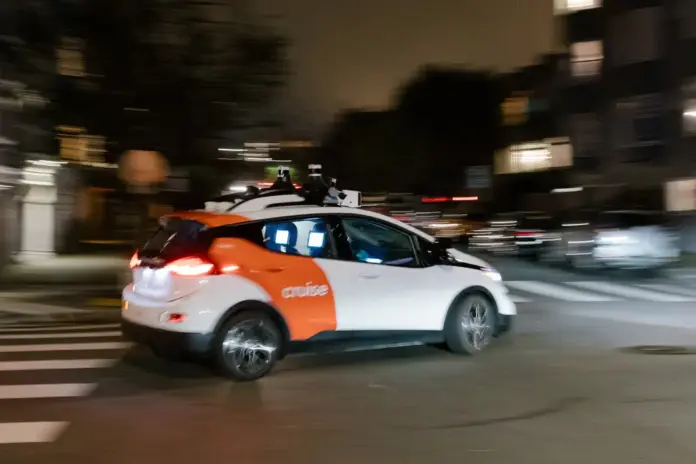Less than a day after one of its driverless taxis collided with a fire truck in a San Francisco intersection, Cruise agreed on Friday to a request from state regulators to cut in half the number of vehicles it was operating in the city.
The setback for the driverless car company came just a week after the California Public Utilities Commission voted to allow the expansion of driverless taxi services from Cruise, which is owned by General Motors, and its rival Waymo, which is owned by the Google parent company Alphabet.
On Friday, the California Department of Motor Vehicles, which regulates the safety of the driverless cars, asked Cruise to halve the number of vehicles it was operating in San Francisco. The Cruise vehicle’s collision with a fire truck the day before had injured a passenger in the driverless car. Earlier in the week, another Cruise vehicle got stuck in newly poured concrete on another city street.
Drew Pusateri, a spokesman for Cruise, said in a statement on Saturday that compared with the injuries and fatalities on the roadway today, Cruise “positively impacts overall road safety” and that it will provide state officials with “any data they need to reinforce the safety and efficiency of our fleet.”
The company, which now has 400 vehicles operating in San Francisco, will have no more than 50 driverless cars running during the day and 150 at night.
Last weekend, about 10 Cruise vehicles stopped functioning in the middle of a busy street in San Francisco’s North Beach neighborhood, blocking traffic for 15 minutes. Mr. Pusateri said in an earlier statement that the cars had difficulty connecting to the Cruise employees who might have guided them out of the way because of a spike in cellular traffic caused by a music festival in the city’s Golden Gate Park about four miles away.
Several other Cruise vehicles also stalled in streets near the park.
One week ago, the C.P.U.C. allowed both companies to charge for rides around the clock anywhere in San Francisco. The C.P.U.C. and the D.M.V. are the two agencies governing autonomous vehicles in California. A company has to obtain a permit from the D.M.V. before it applies for driverless deployment permits — the kind that Cruise and Waymo received last week — from the utilities commission.
The motor vehicles authority said in a statement that it is “investigating recent concerning incidents involving Cruise vehicles in San Francisco.” The agency asked Cruise to cut the number of vehicles operating in San Francisco “until the investigation is complete and Cruise takes appropriate corrective actions to improve road safety.”
“The DMV reserves the right, following investigation of the facts, to suspend or revoke testing and/or deployment permits if there is determined to be an unreasonable risk to public safety,” the agency said in its statement.
San Francisco officials have complained since January that autonomous vehicles have been interfering with emergency vehicles. Before this week, officials documented 55 incidents where a driverless car abruptly stopped or interfered with emergency vehicles, including one instance with firefighters who were battling a house fire.
On Wednesday, city officials filed an injunction asking the C.P.U.C. to temporarily halt the driverless taxi expansion. Neither company has detailed how they plan to add to their driverless taxi services.
Summary:
This article written by Yiwen Lu walks us through a specific incident in San Francisco where a self driving car crashed into a Firetruck. This has created a set back in the advancement of driverless cars and the number of self driving cars has been reduced, especially since there have been other incidents with driverless cars. The company who oversees these cars will be using these incidents to improve the technology to prevent them in the future. The biggest problem they face is the interference with emergency vehicles. This is an important part of new technology that isn’t always considered. I need to make sure to consider the possible repercussions of innovative design – especially since HONDA is a conservative brand.
Works Cited:
Lu, Y. (2023, August 19). Cruise agrees to reduce driverless car fleet in San Francisco after crash. The New York Times. https://www.nytimes.com/2023/08/18/technology/cruise-crash-driverless-car-san-francisco.html?searchResultPosition=3




